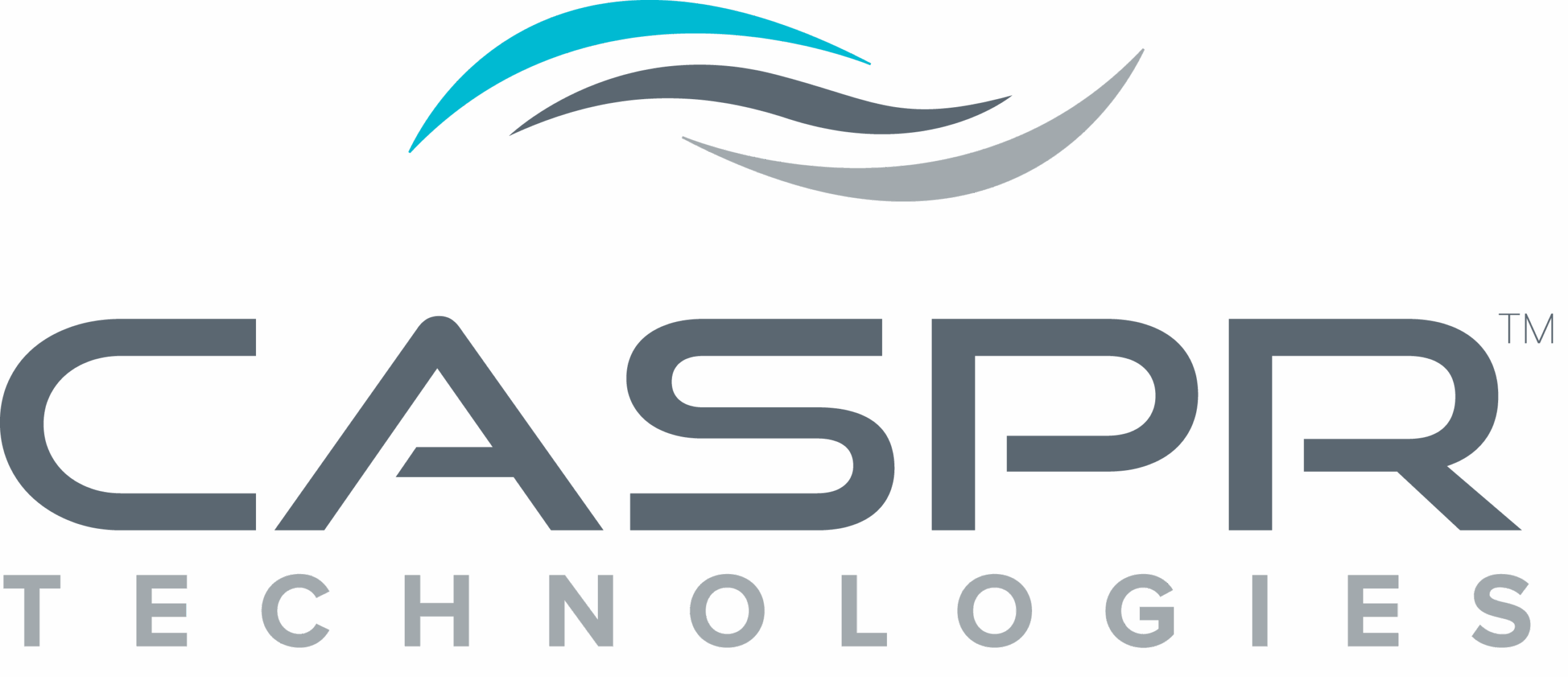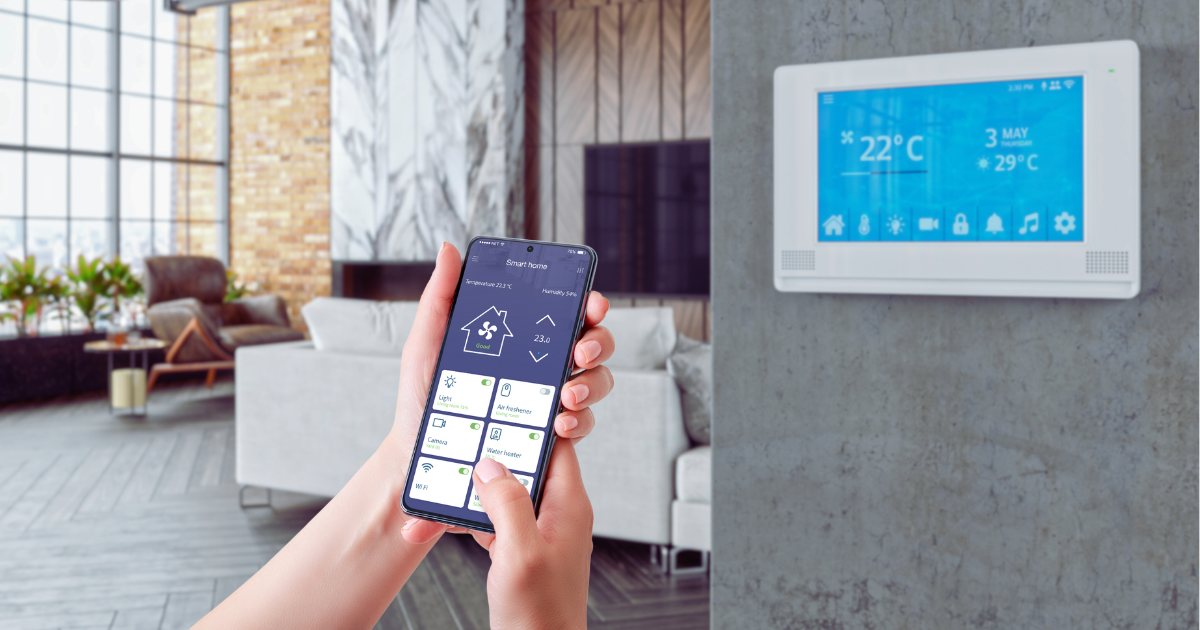The Early Days: Temperature-Only Monitoring
If you go back in time, the original indoor air quality (IAQ) sensors only measured temperature and were usually tied into the thermostat to control the HVAC system. These basic IAQ monitoring sensors/thermostats served a single purpose: maintaining comfortable temperatures in indoor spaces. They operated on simple principles detecting when temperatures deviated from set points and triggering heating or cooling responses accordingly.
The Smart Revolution
Those basic sensor/thermostats have evolved dramatically into smart devices that now include other measurements like humidity and allow remote control of HVAC operation from users’ phones. This transformation has been driven by several factors:
- Advancements in sensor technology making multi-parameter monitoring affordable
- The rise of IoT (Internet of Things) connectivity enabling remote access
- Increased awareness of how humidity affects both comfort and health
- Consumer demand for more convenient control options
Today’s smart thermostats don’t just react to temperature changes—they learn occupancy patterns, adjust to user preferences, and even integrate with other smart home systems.
The Integration Era: Connecting to Building Management Systems
Simultaneously, stand-alone sensors have evolved to include humidity monitoring and are often tied to building management systems (BMS) to control the operation of the HVAC system, adjusting both temperature and humidity. This integration allows for:
- Centralized monitoring of multiple parameters across entire buildings
- Automated responses to changing conditions
- Data collection for trend analysis and system optimization
- Improved energy efficiency through precise environmental control
More advanced sensors are incorporated in demand ventilation control systems that manage the amount of outside air being brought in based on the amount of carbon dioxide measured in a space. This approach recognizes that CO₂ levels serve as a proxy for occupancy and potential air staleness.
Today’s Comprehensive IAQ Monitoring
The current generation of IAQ sensors offers unprecedented visibility into indoor environments. Modern systems can monitor:
- Temperature: Still fundamental for comfort and energy efficiency
- Humidity: Critical for preventing mold growth and maintaining comfort
- Carbon Dioxide (CO₂): Indicator of ventilation adequacy and occupancy
- Particulate Matter (PM2.5, PM10): Tiny particles that can cause respiratory issues
- Volatile Organic Compounds (VOCs): Gases emitted from products and materials that can cause health problems
- Nitrogen Dioxide (NO₂): Often from combustion sources like gas stoves
- Ozone (O₃): Can enter from outdoors or be generated by some office equipment
When these comprehensive sensors are integrated with the BMS, the system can make real-time adjustments to airflow, temperature, filtration, and even the percentage of outside air to maintain optimal indoor air quality.
The Missing Piece: Pathogen Monitoring
So, if I can put a sensor in my facility that measures temperature, humidity, carbon dioxide, particulate matter, volatile organic compounds (VOCs), and then tie that to the BMS to make adjustments to air flow, temperature, and even percentage of outside air, what else would I need?
The major piece of IAQ that has been overlooked for many years prior to the release of ASHRAE 241-2023 is the effect of pathogens. We don’t want VOCs in our air because they make us sick. Similarly, we should be concerned about the amount of airborne pathogens like different variants of the flu virus or even COVID-19.
Unfortunately, there are currently no commercially viable sensors that can be utilized to monitor specific pathogens in the air in real-time. Many sensors provide indexes that are derived from other measurable factors to show the likelihood of people getting sick from each other, but nothing measures the actual pathogen concentration directly. These proxy measurements include:
- Particulate matter in respirable size ranges: May contain pathogens
- CO₂ as an indicator of exhaled breath: Higher levels suggest more potential for person-to-person transmission
- Relative humidity: Some pathogens survive better in very low or very high humidity
The Path Forward: Integrated IAQ Monitoring Approaches
This gap in direct pathogen detection highlights why it is important for facilities to:
- Design to baseline conditions: Maintain environments that are designed to handle the normal pathogen level they expect
- Implement adaptive strategies: Have measures in place to deal with spikes in pathogen levels, such as during flu season
- Layer protective measures: Combine ventilation, filtration, temperature and humidity control, and when necessary, active disinfection devices
- Monitor surrogate parameters: Track the indicators we can measure to estimate pathogen risk
- Stay informed: Keep up with emerging technologies that may eventually allow direct pathogen monitoring
Emerging IAQ Monitoring Technologies
Research laboratories and technology companies are working on several promising approaches to real-time pathogen detection:
- PCR-on-a-chip technologies: Miniaturizing the same technology used in COVID testing
- Spectroscopic methods: Identifying pathogens based on their light absorption profiles
- Biosensors: Using biological elements to recognize specific pathogens
- AI-powered multi-parameter analysis: Using machine learning to identify patterns in multiple IAQ parameters that correlate with pathogen presence
The Future of Intelligent IAQ Monitoring
As IAQ sensing technology continues to evolve, we’re moving closer to comprehensive monitoring systems that can help maintain truly healthy indoor environments. While direct pathogen detection remains elusive in commercial applications, the integration of multiple IAQ parameters with intelligent building management systems represents a significant step forward in protecting occupant health and well-being.
The future of IAQ monitoring will likely combine advanced sensing technologies with predictive analytics to not just react to poor air quality, but to anticipate and prevent it—ultimately creating spaces that actively promote health rather than merely avoiding harm.

